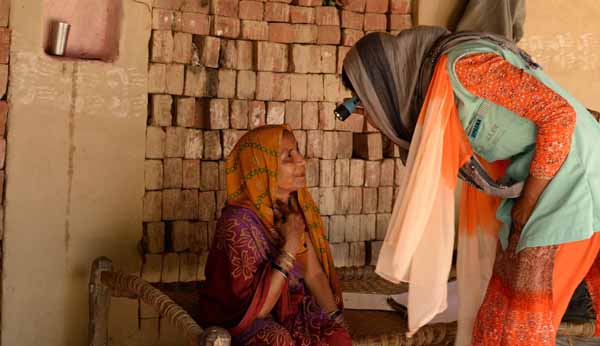
The burden of vision impairment weighs more heavily on low- and middle-income countries, and the global demand for eye care is set to surge in the coming years. We all have a role to play in making eye health a priority, both for ourselves here in Canada and for those around the world who are struggling needlessly with vision impairment.
Earlier this week, the World Health Organization (WHO) released its first-ever World Report on Vision, which highlights the critical need for global action in the fight against avoidable blindness. Globally, at least 2.2 billion people have a vision impairment, and of these, at least 1 billion people have a vision impairment that could have been prevented or has yet to be treated.
The World Report offers concrete proposals to address significant challenges in eye care. The key proposal is to make integrated people-centred eye care, embedded in health systems and based on strong primary health care, the care model of choice and scale it up widely. We’ve already developed a successful eye care model that aligns with this recommended approach. Through our Hospital-Based Community Eye Health Model, we’re able to empower people to take control of their health and increase their adoption of health-seeking behaviour.
We work with local partner hospitals and governments to integrate eye care services into the primary health care systems, providing the same level of care to both paying patients and those who cannot afford to pay. Operation Eyesight-trained community health workers go door to door in vulnerable communities, screening people for vision problems, referring them for treatment, and educating them on eye health and general health. We first launched our Hospital-Based Community Eye Health Model in India in 2009, and have since expanded it to Nepal, Ethiopia, Ghana, Kenya and Zambia with great success.
The World Report also recognizes the success of the WHO-endorsed SAFE strategy for trachoma elimination, which we’ve successfully implemented in Kenya and Zambia. In Zambia’s Sinazongwe district, where we’ve implemented all four components of the SAFE strategy (surgery, antibiotics, facial cleanliness and environmental improvement), the prevalence of blinding trachoma has been reduced from 14.5 per cent to 3.46 per cent.
With support from our donors, we’ve restored sight and prevented blindness for millions of people, but as the World Report reminds us, we still have a lot of work to do. Today, on World Sight, please consider making a donation and joining us in the global fight against avoidable blindness – For All The World To See.

